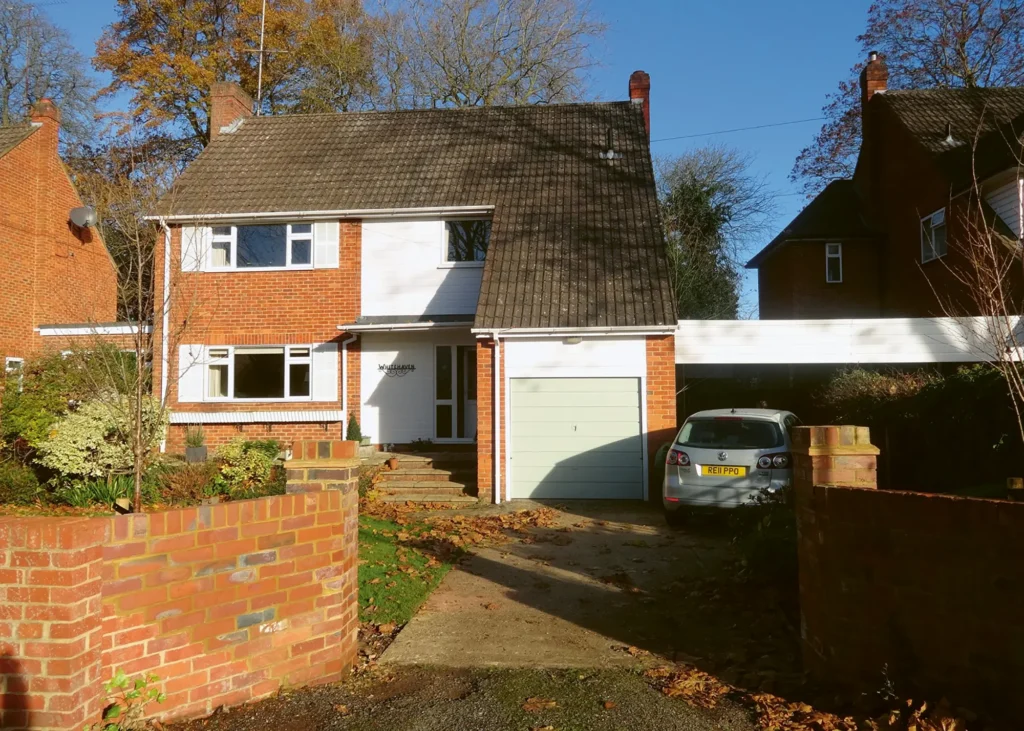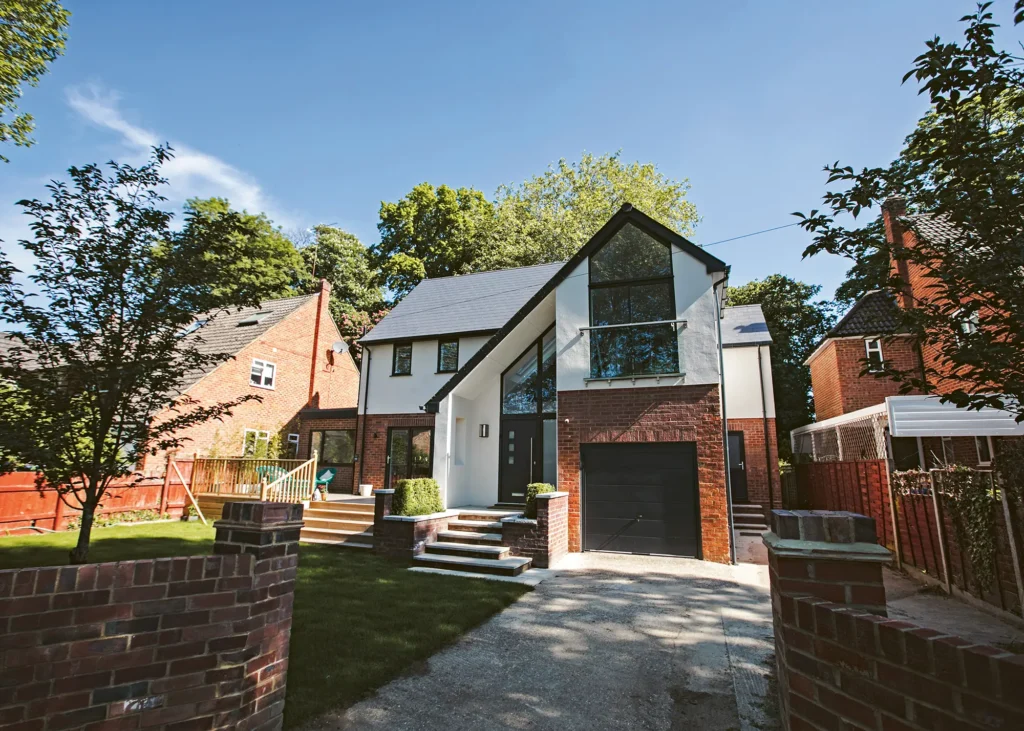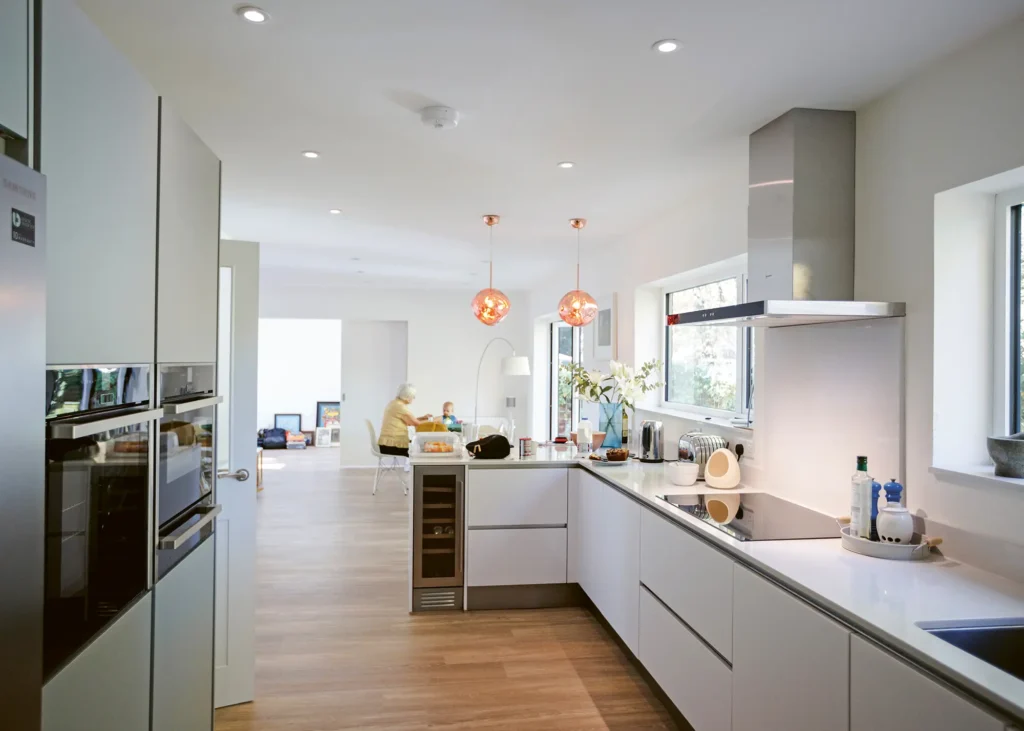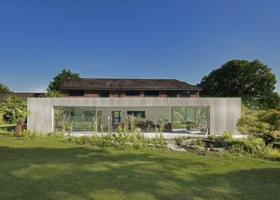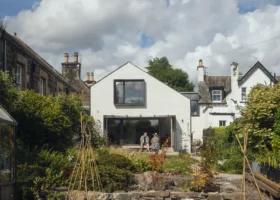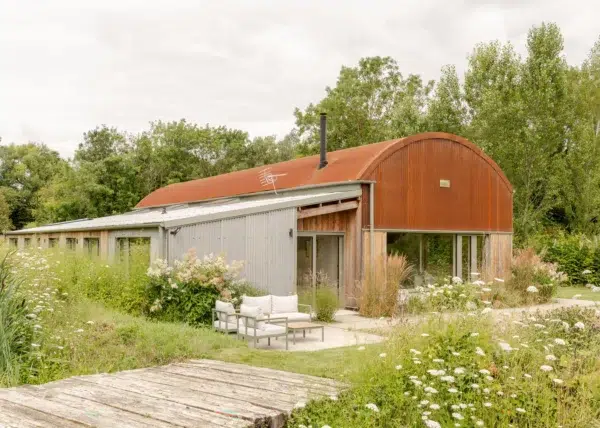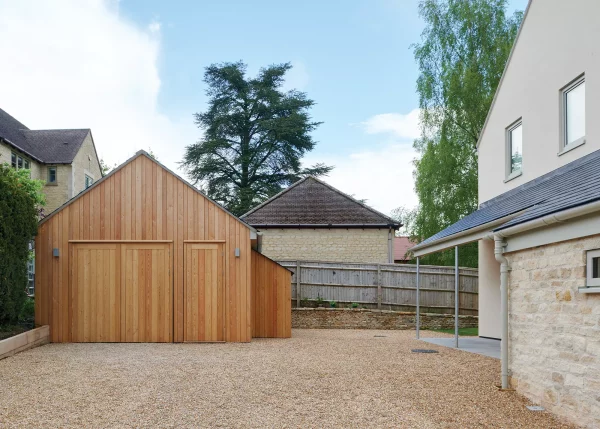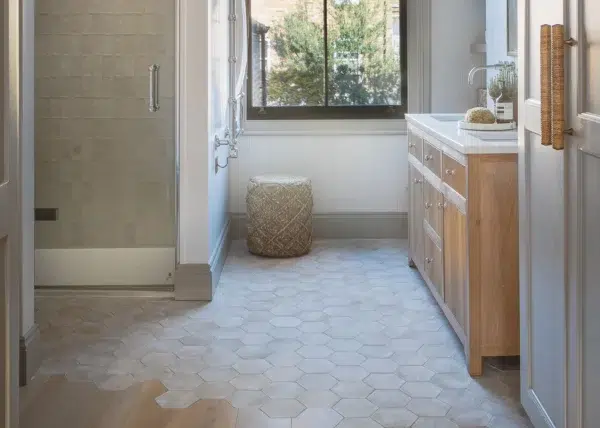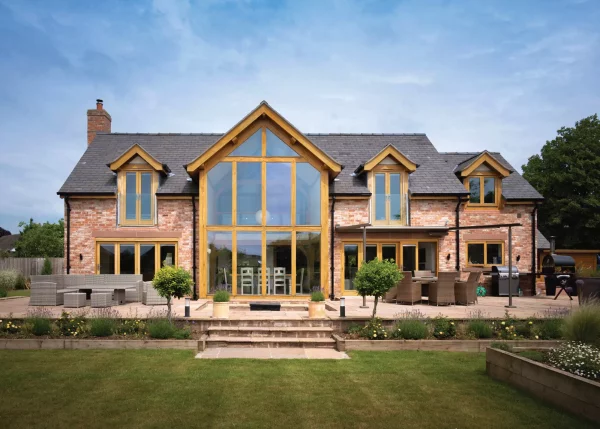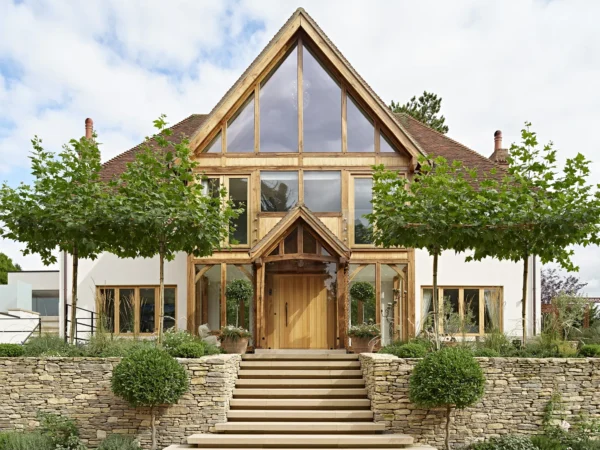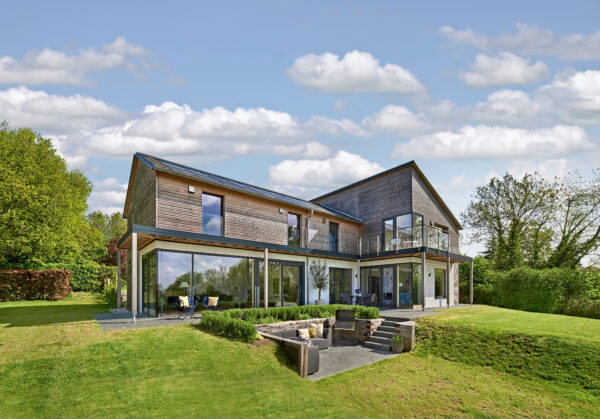1970s House Renovation & Extension Projects – an Architect’s Guide
I relish the idea of taking a 1970s house and making it into my own home. I’ve been fortunate enough to have done this at Lapd Architects for many clients, and these have been some of my favourite projects. They’re delighted when we transform a relatively non-descript house into an exciting contemporary home.
On first impression, a 70s house can look aged and uninspiring. 1970s homes can feel dark and cramped inside, but these properties also tend to come with a generous volume of space, good gardens and the basic structure to be able to create a modern home that meets your present-day needs.
Here, I’m covering some of the typical issues that are likely to arise during a 70s home renovation and identify solutions so that, if you own a 1970s house or plan to buy one, you can transform it into your dream home.
Jump to 1970s house renovation FAQs answered
What are the defining characteristics of a 1970s house?
Most 1970s houses present a wide front facade, often containing an integral garage. The car was still regarded as central to the design of new estates which adopted many American design ideologies, although they were not appropriate for our relatively small UK landmass. Other American influences like feature stone chimneys, warm air heating systems and spacious kitchens were also found in the designs of this era.
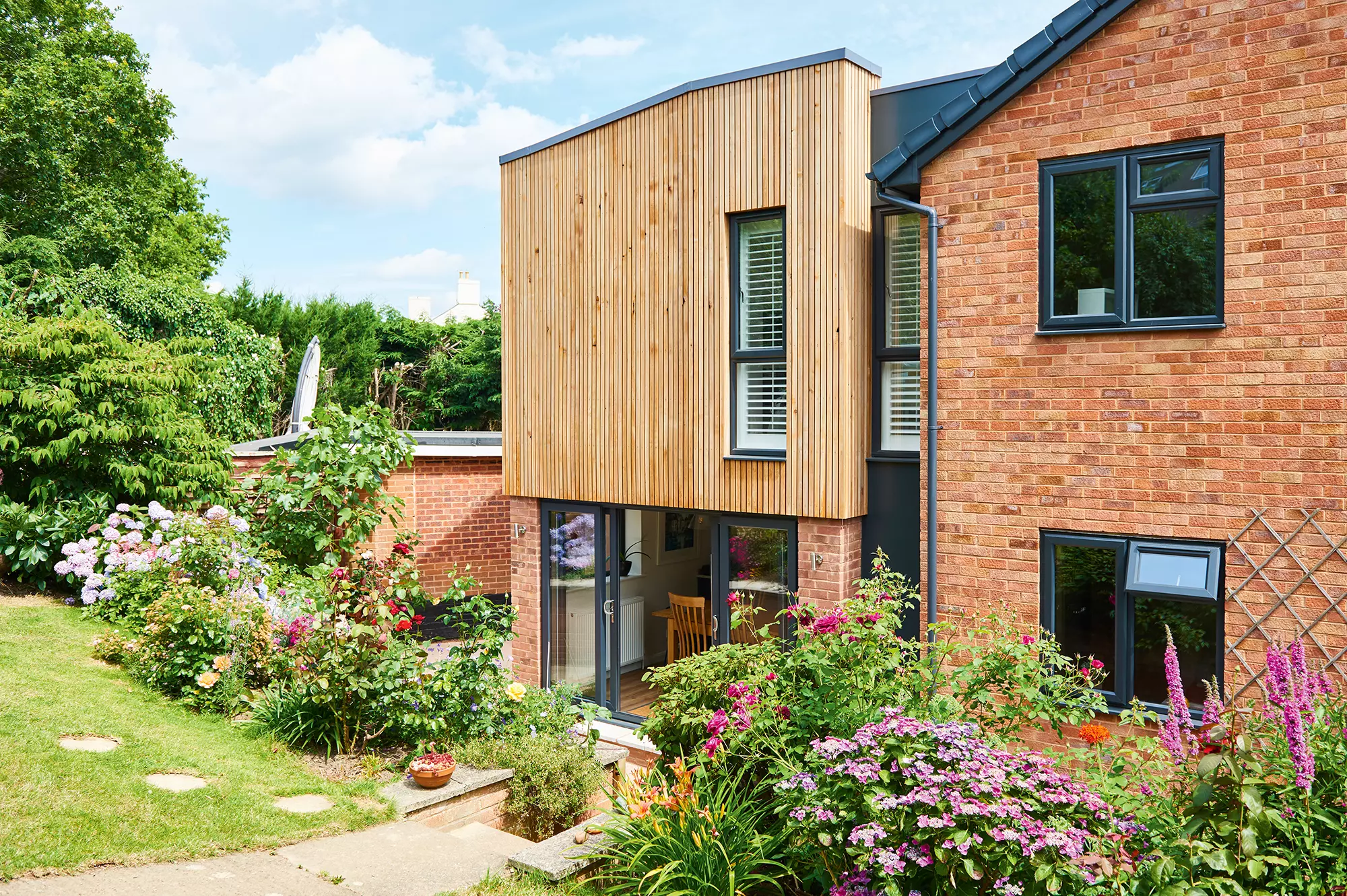
Keen to maximise their spacious plot, Ash and Nancy Rogers extended their 1970s home with a contemporary addition, designed by Barc Architects. Photo: Tom Hargreaves
The landscaping surrounding the houses and the collective appearance of the buildings were both considered important, so we often find generous plot sizes with 1970s houses, with good-sized front and rear gardens. The square footage of the site often brings an opportunity to extend without significantly impacting neighbours.
This era of housing typically used a pale yellow brick, dark tile-hanging and timber cladding on the facades, as well as large, landscape-orientated windows. Staircases were designed to be features, and so you’ll often find open stair risers that offer plenty of opportunity for small children to climb through them, or wide boards acting as balustrading with large gaps around them. Neither of these features meet modern safety standards, but they can be reworked to deliver a much-improved home that meets Building Regs.
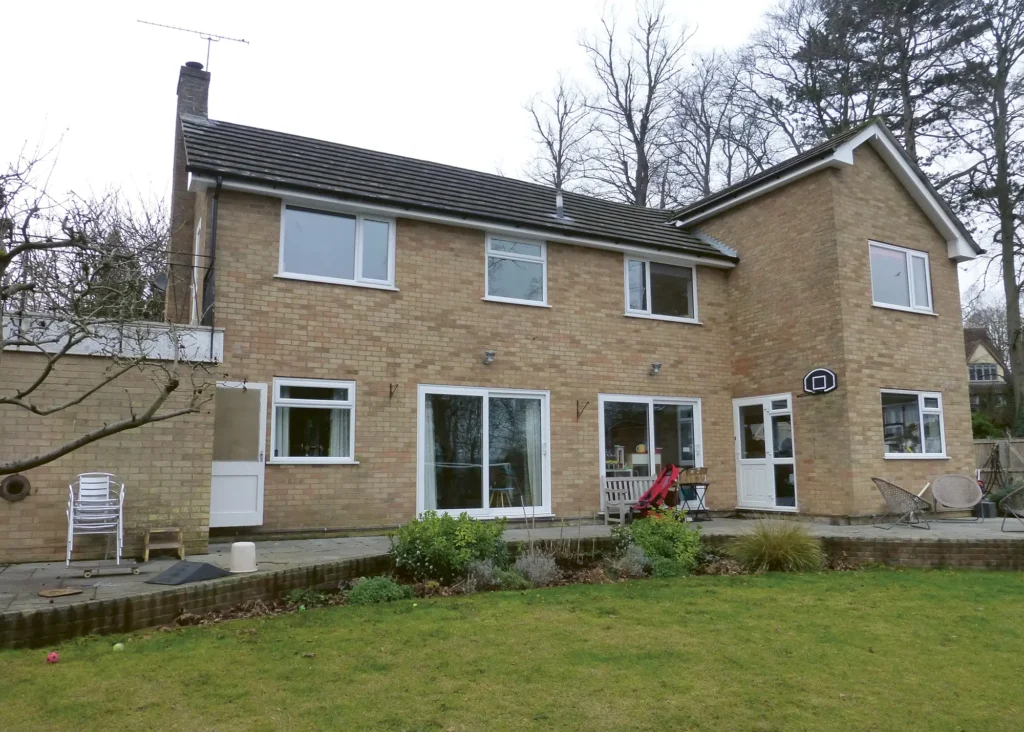
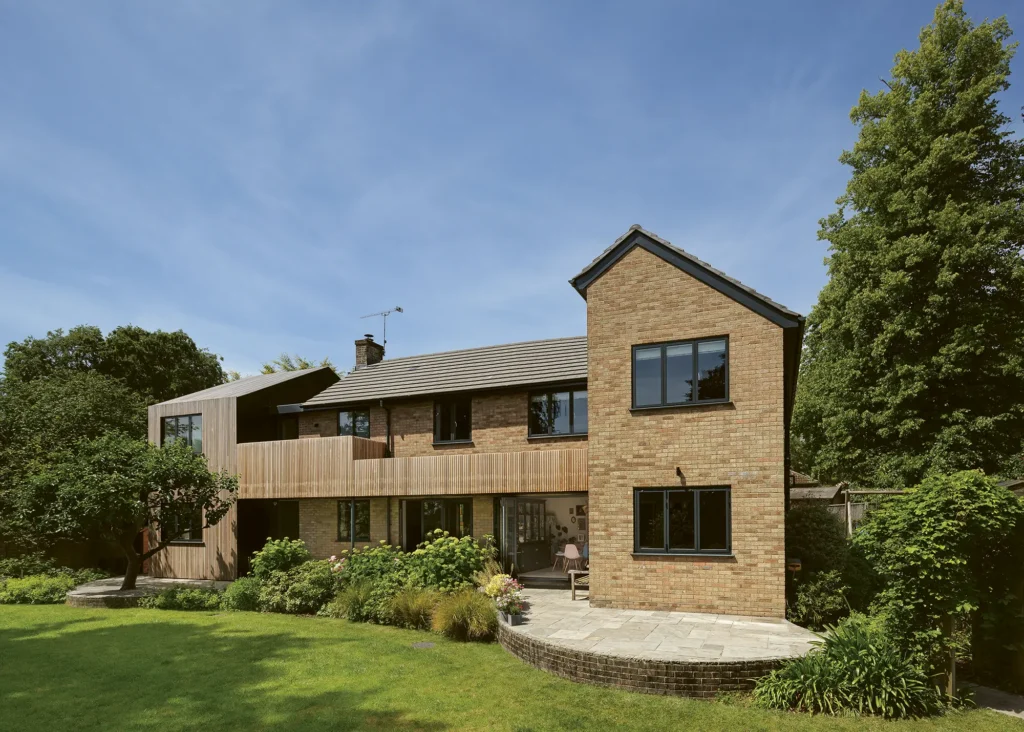
Reconfiguring the internal layout of a 70s house
While having the external appearance of a very large home on sizeable grounds, I find the internal planning of 70s houses to be bigger on the outside than on the inside; much like an inverse Tardis, the rooms feel much smaller than the external appearance leads you to expect. This is usually the result of an internal layout that consists of dark corridors with doors that lead to separate rooms which do not flow into each other.
Often, there are cupboards with solid walls that separate living spaces and are inefficient for storage. It is usually best to remove these and to accommodate storage elsewhere. This gives you the opportunity to incorporate this space into your new design and to increase the size of rooms. You may also find split levels throughout the house which can be interesting, however they limit how you can use the footprint, they may be in the wrong place and act as an impractical obstacle.
Premium Content
Downloadable E-Guide
Build It’s house extension downloadable e-guide will help you plan, design and construct an addition that enhances your existing property while meeting your needs and budget.
find out more
Where there is sufficient headroom, you can align floor areas or, if this is not possible, extend the size of the building at one of the storeys to create a room that works better for you, rather than trying to accommodate the same use across a smaller split-level room. If you level the floors creating an area with a low ceiling, aim to locate utility, storage or cloak rooms in these areas and position your habitable rooms in areas with better ceiling heights.
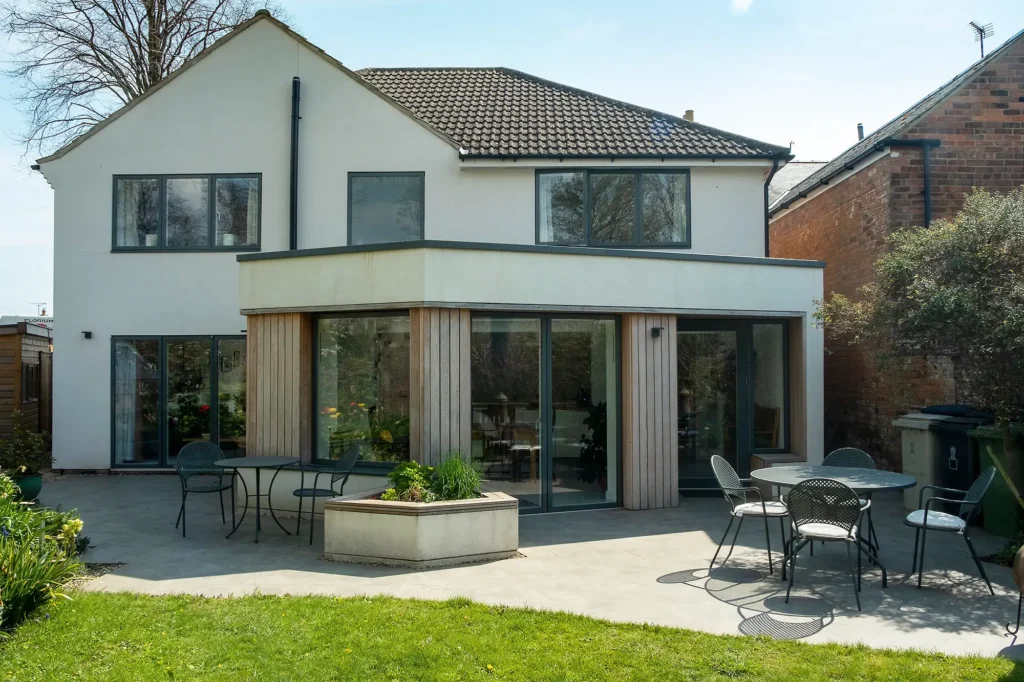
John & Julie Testa used their son’s design expertise to help them transform a 1970s house in Rutland into a bright and modern home. Designed by Paul Testa Architects, the redesign features a larch-clad kitchen extension which is angled to face directly down the garden. Photo: Dave Burton
In our designs we aim to get views all the way through a home, from the front to the back. In some 1970s house renovation projects we have moved the staircase and solid cupboards out of the central spaces and opened rooms into each other, doing away with corridor space. This has the benefit of creating more habitable space and providing you with a larger open-plan room without the need to extend.
To maintain the open appearance of a 1970s staircase, consider replacing the timber with glass balustrading which will seal the gaps and make the flight much safer for everyone in your household. Open risers can be adapted to meet current safety requirements by incorporating a fixed metal bar, which reduces the gap between them.
How can you improve the kerb appeal of a 1970s house?
One of the most requested objectives of clients who are looking to redesign their 1970s houses is to improve the exterior appearance of the property and enhance its kerb appeal. This is because the elevations are typically long, dark and flat – a popular look at the time.
However, current tastes are not in favour of the flat designs and simple detailing that 1970s elevations offer. A building looks more visually appealing when its front view has elements of interest that break up the facade. For example, you could change a single linear roof to incorporate a gable feature or introduce a new bay window.
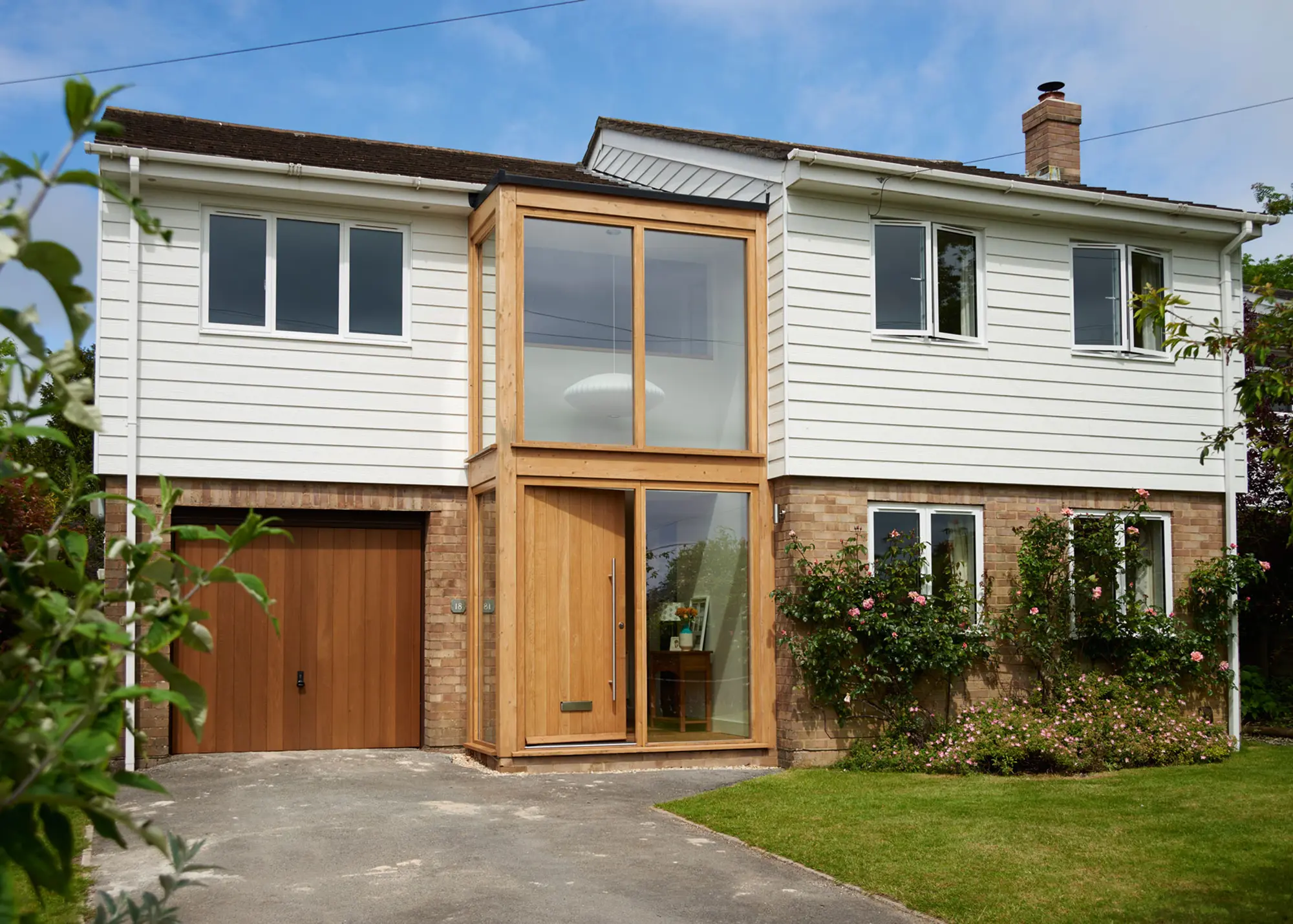
Two sizeable extensions and a reworked floorplan have transformed the Gardners’ dated 1970s house into a light-filled family home. New cladding on the upper floor, along with replacement windows with a slimmer aluminium profile have given the house a facelift. Photo: Alistair Nicholls
The typically wide, white casement windows on 1970s properties emphasise the horizontal nature of the elevation, but these can be redesigned to have a portrait aperture instead. We often put in smaller windows and block up existing large units to transform the front of a home, ensuring that the resulting design still has sufficient light.
An alternative approach is to combine the ground and first floor windows to make a large multi-level glazed feature which continues the glazing up into a new gable roof. This worked successfully at our Whitehaven project (see case study box below), turning the run-down 1970s house into a modern home.
Updating a 1970s house exterior with modern render materials like untreated timber or metal is effective in improving its kerb appeal, too. It’s also an opportunity to boost its thermal performance.
CASE STUDY 1970s house upgradedLapd Architects’ Nikki Fulton transformed this tired 1970s estate house into a beautiful 21st-century home. The owners were keen for their abode to be a standout structure on a street full of similar-looking houses, as well as reconfigure the internal layout to better suit their needs.
|
How can you improve the energy efficiency of a 1970s home?
Upon removing tile-hanging or timber cladding as part of a 1970s house renovation, you’ll either be met with concrete block wall, or timber studwork with the plasterboard of your bedroom wall attached to it. In the latter case, it will be clear to you why your room has always felt cold; there was hardly anything between you and the external environment. This gives you a great opportunity to enhance the thermal performance and improve the airtightness of the building by adding insulation into these spaces and the rest of your external walls.
The same goes for floors. In areas with suspended timber floors, lift the floorboards and fit a windtight breather membrane underneath them and insulate between the joists before relaying the boarding. Concrete floors are harder to improve, as they tend to be a thin layer of screed laid directly onto a relatively thin concrete slab.
In some projects, we have removed these floors where they’re cracked or we’re looking to improve the thermal performance of the whole house. Before you start this kind of work, however, a structural engineer is required to review the property and the depth of the existing foundations.
Improvements to the thermal performance of a roof tend to be far easier to make than those to the walls or floors. The easiest way to do this is to lay mineral wool insulation above ceiling joists. If there is more height available, consider insulating both at and below rafter level to create a warm hat over your house.
The windows and doors on a 1970s house are likely to be single glazed with timber or possibly steel frame, so upgrading the windows to double or triple glazing is one of the biggest improvements you can make.
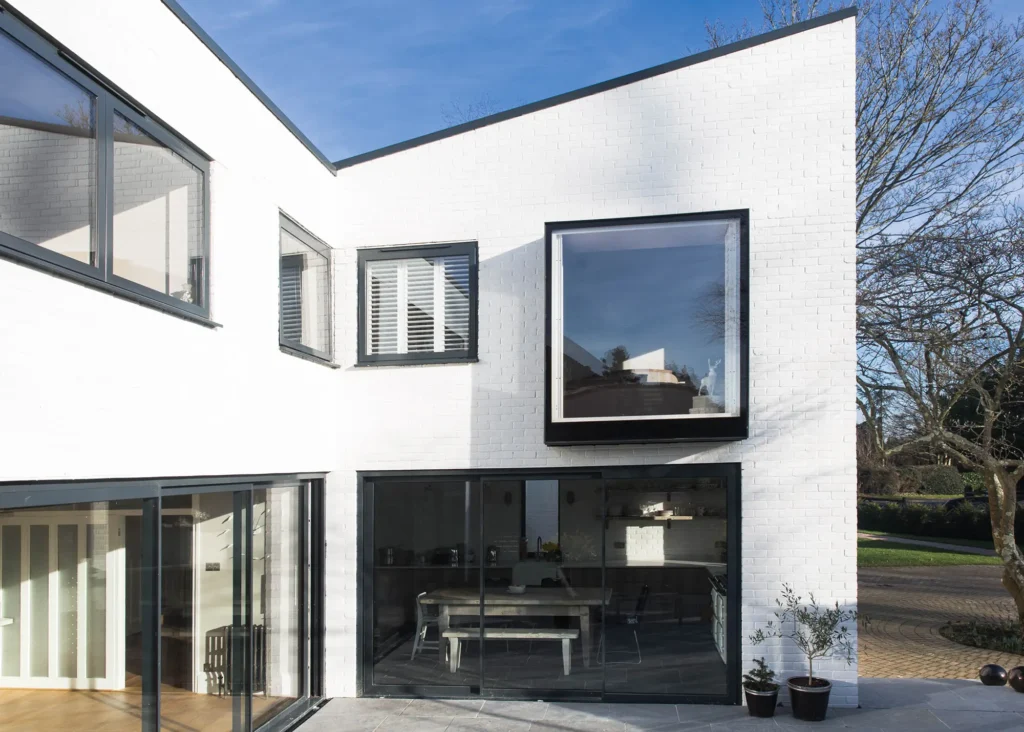
Alter Architects were commissioned to redesign this 1970s home to accommodate multigenerational living. Much of the existing building was recycled and the original stock bricks were reused. Sheep’s wool insulation was installed to upgrade its thermal performance
Today’s Building Regulations require us to consider heat lost and gained through glass in buildings. Think about the orientation of large expanses of glass and consider reducing the surface area of those windows.
If you want to maintain the views and dramatic impact of large swathes of glazing, then also weigh up the addition of external shading devices. A 1970s striped awning could do the trick, or you may want to consider a more contemporary method such as fixed louvres or shutters.
An improved level of airtightness means you’ll need to design in ventilation to ensure you have a constant supply of fresh air and to minimise the risk of condensation. Using the redundant ductwork from an original warm-air heating system in your 1970s house, you could consider installing a mechanical air ventilation system, perhaps with mechanical ventilation and heat recovery (MVHR) if your budget allows.
Alternatively, consider more passive ventilation measures as part of a 1970s house renovation, especially in kitchens and bathrooms, such as trickle vents and extractor fans. A roof-level opening window, usually above the staircase, is particularly important for very hot weather, as it will naturally ventilate your home and provide an effective form of cooling.
FAQs
Do you need planning permission for a 1970s house renovation?
“The permitted development (PD) regime sets out a range of projects that can be undertaken without submitting a planning application. PD can enable some quite significant changes to your property, such as extensions within certain sizes and parameters. The rules around permitted development can be quite complex. What is allowed will depend on the history of your property, along with the extent of any previous works and how they were achieved – ie did they need planning permission? You may also need to look at the original consent that was granted for the house, particularly if it is a fairly new home, to see if the approval imposed any restrictions on future works that can be done without permission,” says Build It’s planning expert, Julia Riddle.
“In circumstances where certain PD rights have been removed on the original permission for the house, even changes to the garden may require a formal application. Similarly, you should check if your property is within an area subject to an Article 4 Direction, as this may remove rights for certain Permitted Development works,” she says.
Should you just knock the 1970s house down and rebuild a brand new home from scratch?
Although 1970s house structures are better than those dating pre-1965 (when the first set of Building Regulations was introduced), new build homes that meet those standards would be condemned today. However, the buildings are still standing after 50 years, so you can probably enhance the structure of the outer shell rather than demolishing the entire thing. Reconfiguring the space within the existing volume or adding fairly modest extensions may be more economical than building from scratch.
Occasionally you might consider demolishing and rebuilding, subject to the tax you would otherwise pay. Current HMRC rules provide that new builds are zero-rated for VAT purposes, and refurbishment and extension projects are subject to full VAT at 20%. So, before committing to a planning application, calculate the total cost of your refurbishment plans.
For some projects, by the time you add on VAT to your overall expenses, the price is very close to that of a 0% VAT newbuild. If this is the case for you, consider how far the existing structure compromises your dream home design, and whether or not that 20% is better spent to remove those barriers through demolition and rebuild.
Will insulating the house’s roof help lower energy bills?
Insulating the roof easier insulation improvements that you can make to your property. If you have an unused loft zone, this can be as simple as putting down mineral wool above your ceiling joists. To be effective, a thickness of at least 40cm of insulation is needed. If you are using the space for storage, you’ll need to make sure the new insulation isn’t squashed. Install boarding using specific stilts to avoid this.
To bring a roof space up to a habitable standard, you will need to insulate at rafter level. Usually, a layer of rigid insulation is inserted between the rafters. You need to maintain an air gap above the insulation of about 5cm between it and the roof tiles or other roofing material.
A further layer of insulation is then also fitted across the rafters, as if you are ‘boarding out’ the ceiling of the loft with insulation material. The total thickness of material needs to be around 10cm-15cm to meet new build standards and, if you can afford to do so, makes for a very efficiently insulated loft space.
Do I have enough head height inside my loft for a conversion?
Loft conversions are a popular home improvement project, allowing you to maximise your home without extending into the garden zone. You can check the available head height yourself by measuring the distance between the top of the attic’s floor joists and the underside of the ridge beam. If there’s at least 2.3m of space available, you should be able to create a comfortable finished room once the new floor and ceiling finishes have been installed. You can get away with 2.1m, but it won’t feel like a full storey.
If the ridge height is too low, there are options to increase headroom. One is to simply replace the existing structure with a new roof – usually by craning in either attic trusses or a full modular loft (keep reading for the types of loft conversion). The alternative is to lower the floor level in the loft by sacrificing some height on the storey below.
Do I need planning permission to repair or replace the windows as part of a 1970s house renovation?
You won’t need planning permission to replace the 1970s home’s windows provided that, as a result of the change, the appearance of the house isn’t materially altered (so some change is permissible). You can even enlarge existing fenestration under permitted development – although take note that bay windows are considered to be extensions.
Special rules intended to protect neighbours’ privacy apply to windows on the side of a house, which should be fitted with obscured glazing. It’s quite common to see conditions on previous planning permission preventing alterations to windows in houses and conversions – so always check this before proceeding with your renovation project.


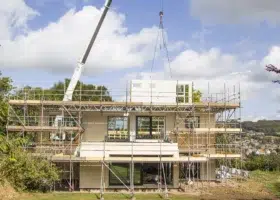
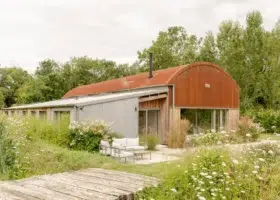
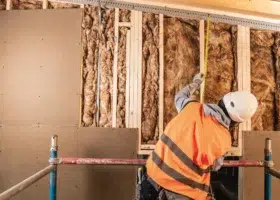
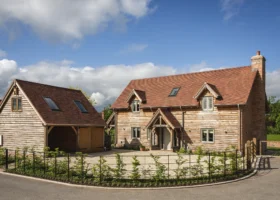
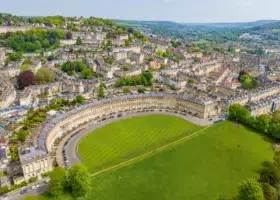

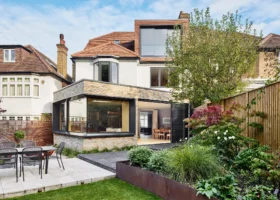
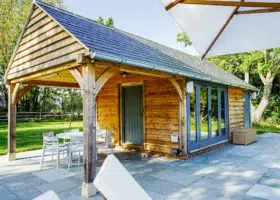
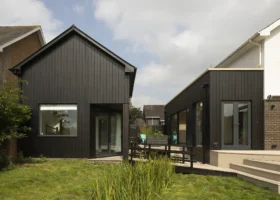
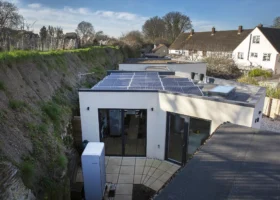
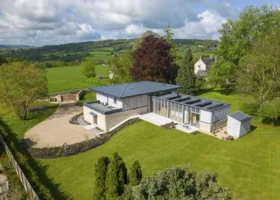



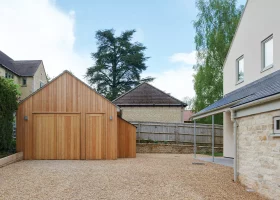
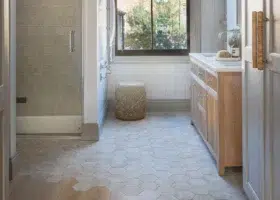

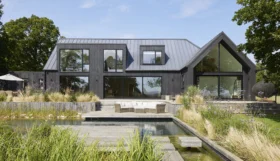
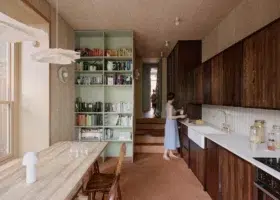
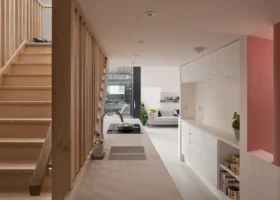
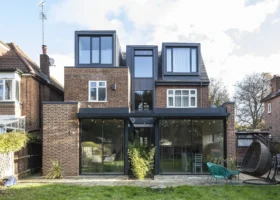
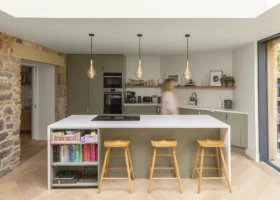
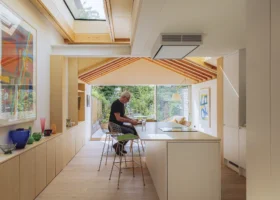
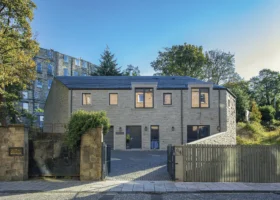
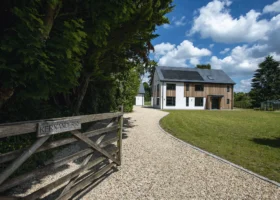


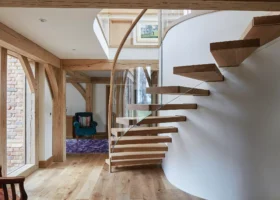
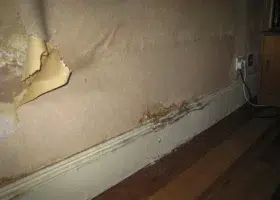
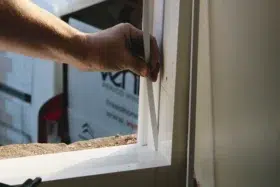


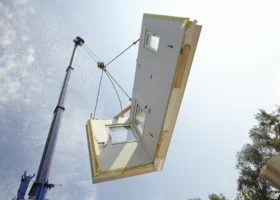
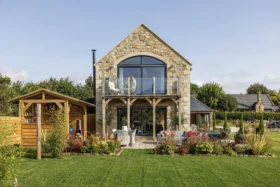

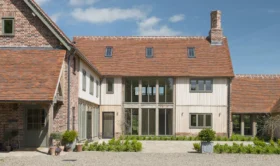

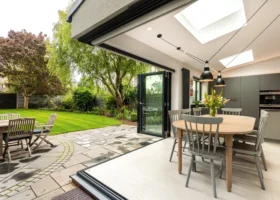
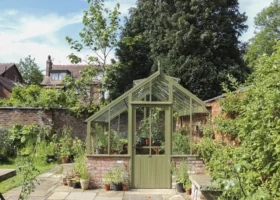
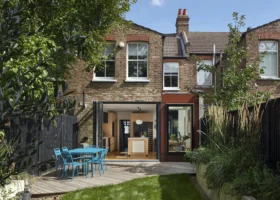

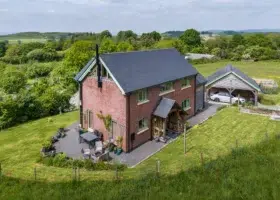
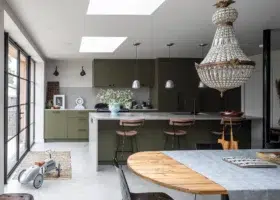
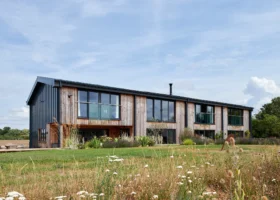
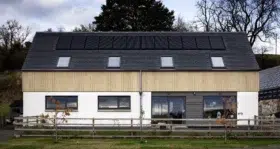
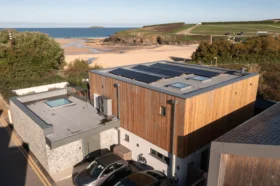


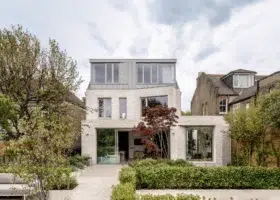
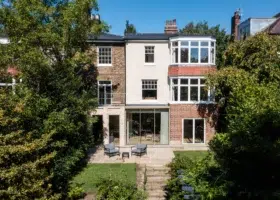
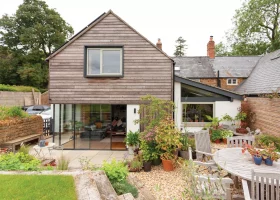
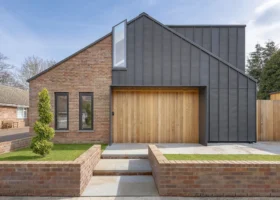
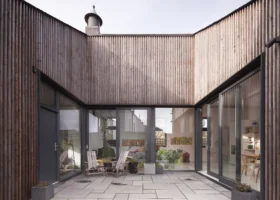
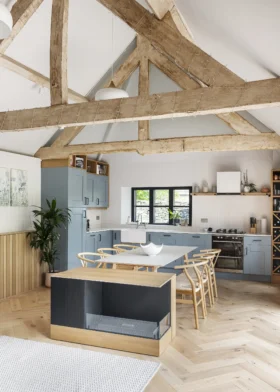


















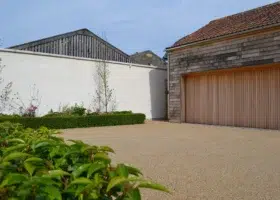




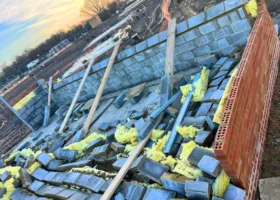

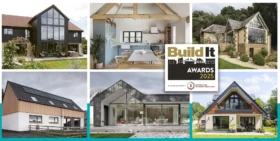





 Login/register to save Article for later
Login/register to save Article for later

